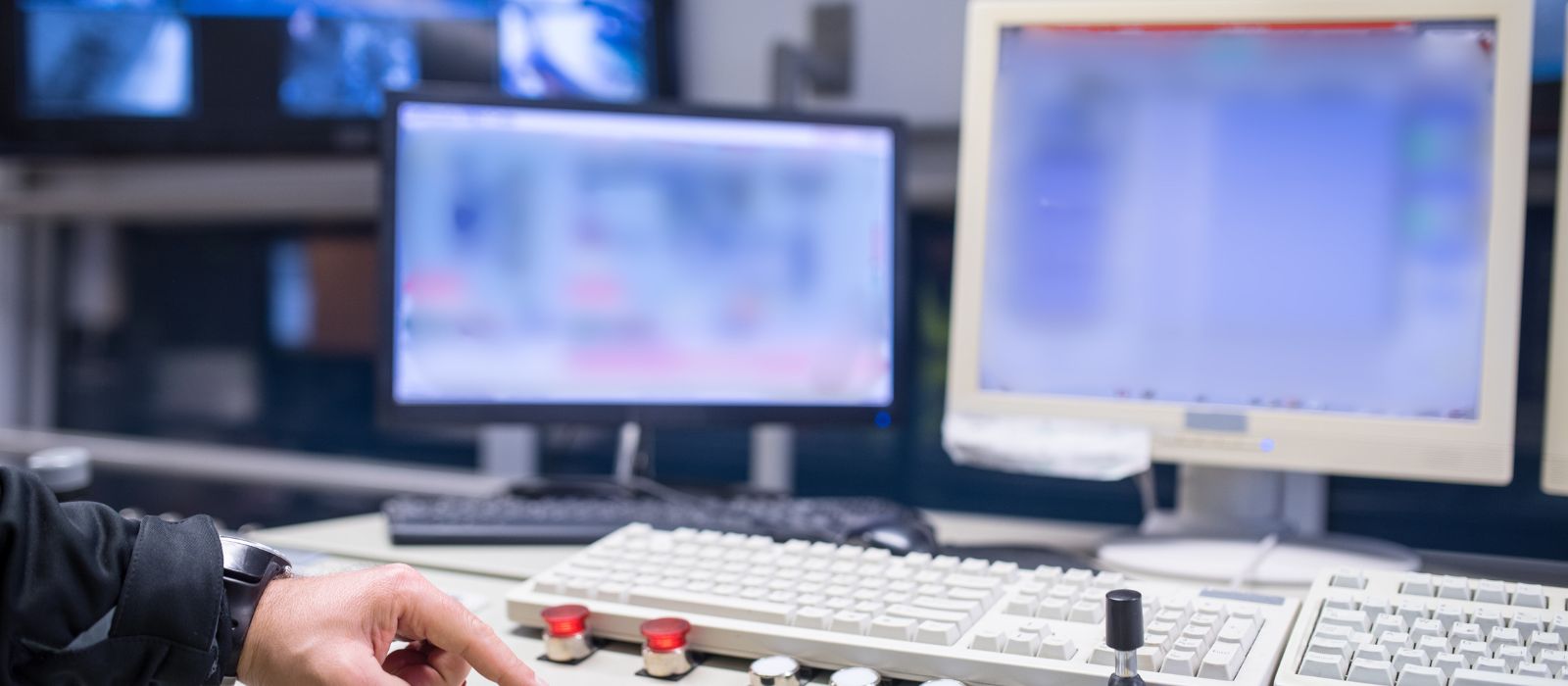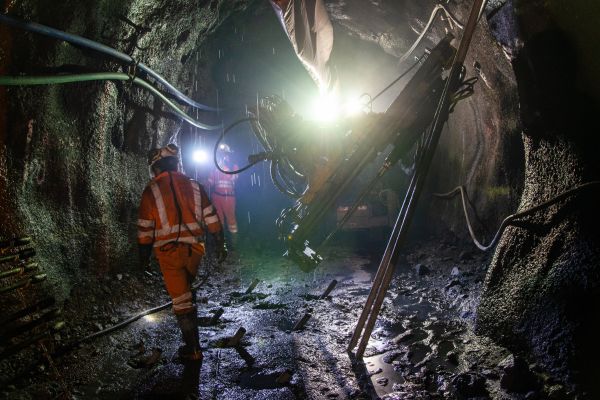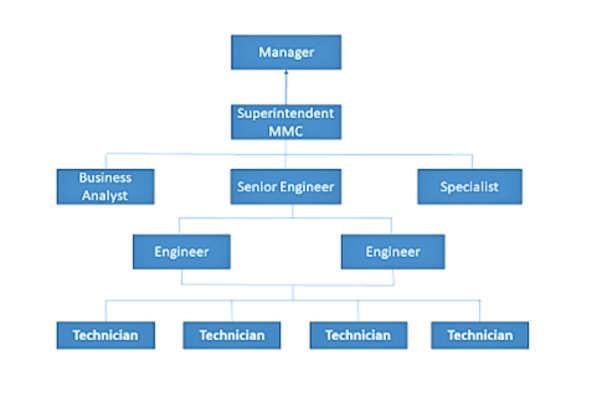Mine monitoring or control (Part 2) – Supporting success?

'Mine monitoring or control (Part 1) – What is the objective?' can be found here
'Mine monitoring or control (Part 3) – Staffing the control room' can be found here
Supporting mine monitoring and control
In addition to the control room role discussed in Part 1, there are a number of roles that are required to sustain operation of mine monitoring and control (MMC). These are roles which may, or may not, require a dedicated position to be filled or, alternatively in some cases, can be covered by personnel in positions that are primarily for other roles e.g:
- Systems administration
- Management
- Process ownership
- Technology support.
Systems administration
All systems require administration. The systems used in mine control can have a number of aspects that are quite dynamic particularly:
- locations
- people
- equipment (to a lesser extent).
A 'location' example of systems administration
Clutching a hard copy of the daily report, a mine manager heads for the control room following the daily operations meeting.
The controller is asked, “Why was Loader 5 working in heading ABC all day yesterday? It was supposed to be in heading XYZ.”
The Controller responds that “Loader 5 was actually working in heading XYZ all day yesterday, but XYZ hadn’t been set up as a heading in the system. So I allocated it to ABC, which was the nearest heading that existed in the system.”
In the bulk of mines, new mining locations are continually becoming active and diligent administration is required to ensure that new locations are available in the relevant systems. Implementation of new locations is not limited to their creation in a system, as both the control room and underground users need to be made aware of the new location names and when they are to be used. A process is required.
Mines vary in the turnover of personnel; regardless, there is a requirement that new starters be added to systems. When personnel terminate it is important that their names are removed from data capture applications but on the other hand their history needs to be maintained. The management of personnel names in systems is an important part of the administration role for mine monitoring and control.
Equipment comes and goes from mine sites; however, it is usually an infrequent occurrence. Nevertheless the configuration of equipment names in systems needs to be maintained in a manner similar to locations and personnel.
Therefore the role of 'MMC – Systems Administrator' needs to be filled.
Management
There are 2 aspects to the management of control room personnel:
- management and administration as employees
- functional relationships.
Control room personnel have the same employment supervision requirements as any other employee: leave arrangements, rosters, training, performance reviews, etc.
Where the control room role is a dedicated position, coverage for absences becomes an issue. A back up controller needs to be available, often at short notice. The skills, knowledge and authority required of the backup controller remain the same as the regular controller.
How many times have you witnessed the situation where there is no established mine control person available and someone comes up with a statement like: “Get such and such from admin, they know how to use computers.”
It is fundamental that a mine control room operator interacts with a number of other stakeholders. Having good interpersonal relationships with these stakeholders contributes substantially to the mine control process.
The author classifies the relationship between mine control personnel and front line supervision at the second most important success factor. In some cases mine control personnel report directly to supervisors; however, it is also common for mine control personnel to formally report elsewhere, particularly when the supervisors are employees of a mining contract company and the mine control personnel are employees of the mine owner. Questions arise regarding authority to give instructions and provide direction.

Process ownership
There is a lot of published literature regarding ownership of processes, much of it in relation to business process improvement (eg Google ‘process owner’). The author asserts that mine monitoring and control is a continuous sustained exercise in process improvement, every decision is made on the basis of what is best to do next.
The process owner is the person who:
- makes mine monitoring and control important
- sets and upholds the standards
- can stand up in front of a crew to explain a change to a process and have the crew nod, say yes and actually implement the change
- can set the priorities for mine monitoring and control
- can understand the ramifications across all disciplines of changes or shortcomings in mine monitoring and control
- can resolve conflicts within the mine monitoring and control processes.
Mine monitoring and control requires an owner. The owner is not a full-time position but rather a role.
Another practical example
A new mining manager commenced at an underground site with a very good mine control process.
The new manager immediately implemented a practice whereby equipment that was going to the surface workshop for maintenance was removed from the data capture portion of the mine control system.
This served to inflate the reported availability. On the other hand, it compromised the ability to account for equipment 24x7.
One of the responsibilities of the process owner role is to monitor such behaviours and ensure that corporate standards are maintained.
What are the options for filling the administration, management and ownership roles?
The range of approaches to providing the support roles associated with mine monitoring and control varies dramatically with the size of the operation and, importantly, with the site management maturity in regard to the control room and respect of its place within management of the operation.
Resourcing of the administration, management and ownership roles can vary between 'not resourced at all' to having a significant team of people.
Let’s discuss a number of options:
- The gold standard – an MMC support team
- Bottom of the barrel – no formal support
- A common configuration – the mine control supervisor
- Another approach – distributing support across professional disciplines.
The gold standard
At a large panel cave site owned by a Tier 1 company, an MMC team consisting of 10 people headed up by an MMC superintendent, who reported into the manager of ops readiness, was established. All MMC team members were employees of the mine owner.
In this situation the MMC team provided both the ownership and administration roles. Ownership being the domain of the specialist, senior engineer, superintendent and manager. Administration belonged to the engineers and technicians. The control room personnel largely were high calibre supervisors rotating through mine control and as such were employees of the mining contractor reporting into operations.
Image: The team structure.
Bottom of the barrel
There are sites where mine control is not valued, in particular the administration and ownership roles are not seen as important. The personnel working in the control room are largely left to carry out systems administration on their own and be the face of mine control in dealing with the workforce. They will have a formal line of reporting but again there can be little regard for the importance of their work by management.
In these situations the role of mine control is often just one of being a 'tally clerk'. A degree of coordination does occur but is very dependent upon the calibre of the person.
A common configuration
It has become quite common for sites to have a full time position of mine control supervisor.
The author contends that this can be a way of management opting out from putting the necessary support resources in place.
This mine control supervisor is expected to:
- administer the systems used
- be the face of mine control in dealing with management, technical disciplines and the workforce
- manage mine control personnel for rosters, leave and coverage, and
- fill in as a backup controller during absences and leave.
These roles each require a quite different set of skills and competencies and it is unusual to find an individual that can cover all the tasks. This author contends that the expectation of having mine control supervisors cover in mine control during controller absences is unsustainable. Mine control supervisors, in this model, are often seen working 14+ hour days having R&R disrupted to cover absences, filling night shifts at short notice, doing long swings and generally carrying a huge workload.
A variation on the mine control supervisor concept that approximates back to the MMC team described above has been observed. There is a team of three:
- 1x mine control supervisor
- 2 x senior mine controllers
The team operating under the mine control supervisor are responsible for systems administration and extension of the mine control process. The senior controllers handle training of mine control personnel. The mine control personnel are members of the underground mining crew with a nominated controller and a backup. The senior controllers also can occasionally, but not regularly, fill in as controllers.
Another approach
Another approach has been observed where the administration support role is distributed amongst the relevant professional disciplines: geology, engineering, personnel and maintenance. Engineers and geologists have a part time responsibility to ensure that location names, routes, schedules, people starting and terminating and equipment arrivals and departures are kept up to date.
This approach appears to work well in cases where the control room personnel are high calibre and play a role in demanding that the systems administration is up to date.
Having high calibre people in mine control implicitly means that they take a degree of the ownership role.
An example of this approach
A very successful case used contractor underground shift supervisors in mine control on a rotation basis. They reported into a contractor site manager and between them they fulfilled the role of process owner. Client professionals carried out the technical support while the contractor administration kept personnel information up to date.
Technology support
It is fundamental that whatever level of technology is used, the technology must work, regardless of whether it is:
- a handheld device
- voice radio/telephone
- digital communications infrastructure
- electronic sensors
- computer systems
- video
- any other technology.
Sustaining a technology infrastructure requires human resources.
An underground mine is a harsh environment for technology. Mine monitoring and control is extremely dependent upon technology, particularly communications and field devices. The challenge is further complicated by a mine being a dynamic geography that is constantly changing and extending.
Therefore, two challenges for technology support exist:
- maintaining technology in a harsh environment
- extending technology infrastructure as the mine extends.
Both require people. The problem is further compounded by Fly In, Fly Out (FIFO) rosters. Mine monitoring and control is a real time activity and if the enabling technology is not operating, the process is compromised. Similarly, where either online systems or voice radio communications are used to provide feedback and directions to underground supervisors and operators a break in technology availability again compromises the process.
Coverage for technology support is essential for sustainable mine monitoring and control.
A final anecdote
A mine operated by a contractor had set up a quality mine control capability. The system was provided by a market leading open pit FMS provider. A quality digital communications network was installed by the mine owner; it involved 'plug and play' components.
Experienced control room personnel were recruited from around the industry with a dedicated experienced administrator. Three communications technicians were employed to maintain and extend the infrastructure.
The implementation had been well managed with good buy-in from the stakeholders.
The process and its components functioned well for several years.
A new mining manager arrived and clearly did not understand the effort that had gone into mine control and the benefits that were generated. The new manager’s immediate action was:
- Sack the communications technicians: “we don’t need them”.
- Remove the administrator position: “the controllers can do the administration themselves.”
Within a little over a year the mine control process was clearly failing. Blame for this was targeted at the “system” and shortly afterwards a project was established to replace the system with another product.
Stories like this are only too common.
Summary
Part 1 of this series covered monitoring as an essential pre-requisite to achieve control. However, monitoring on its own, does not constitute 'control'.
It is the capability to react in situations that monitoring identifies as “out of control” that constitutes control. The reaction can come from either systems or, more commonly, responsible people. The quality of the responsible people in decision making for control dictates the success of the control process.
Part 2 covered the support framework required for success. There are essential roles in support of the monitoring and control:
- diligent systems administration
- management of MMC personnel
- strong process ownership
- support to keep technology functioning.
Conclusion
The author concludes that: getting the people part right is essential for success in mine monitoring and control.